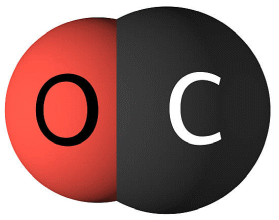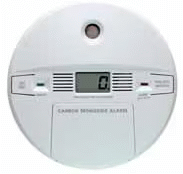  Carbon monoxide is a colourless, odourless gas. A molecule of carbon monoxide (CO) contains one carbon atom and one oxygen atom.
Carbon monoxide is a colourless, odourless gas. A molecule of carbon monoxide (CO) contains one carbon atom and one oxygen atom. Carbon monoxide is flammable and is toxic to humans and other oxygen-breathing organisms. Prolonged exposure to carbon monoxide can be fatal. It kills without warning, claiming the lives of hundreds of people every year and making thousands more ill. The most common symptoms of CO poisoning are headaches, dizziness, weakness, upset stomach, vomiting, chest pain, and confusion. CO symptoms are often described as 'flu-like'. If you breathe in a lot of CO, it can make you pass out or kill you. People who are sleeping often die from CO poisoning without waking up.  While volcanoes and exhaust emissions from automobiles contribute carbon monoxide to Earth's atmosphere, the danger comes from high concentrations that build up in enclosed spaces from household items such as improperly vented gas- and oil-burning furnaces, portable generators or heaters, stoves, lanterns, grills and fireplaces. Many of these devices are not meant to be used indoors, or in tents or recreational vehicles. While volcanoes and exhaust emissions from automobiles contribute carbon monoxide to Earth's atmosphere, the danger comes from high concentrations that build up in enclosed spaces from household items such as improperly vented gas- and oil-burning furnaces, portable generators or heaters, stoves, lanterns, grills and fireplaces. Many of these devices are not meant to be used indoors, or in tents or recreational vehicles.

You can reduce your risk of CO poisoning by installing battery-operated or battery backed up CO detectors near every sleeping area in your home. |